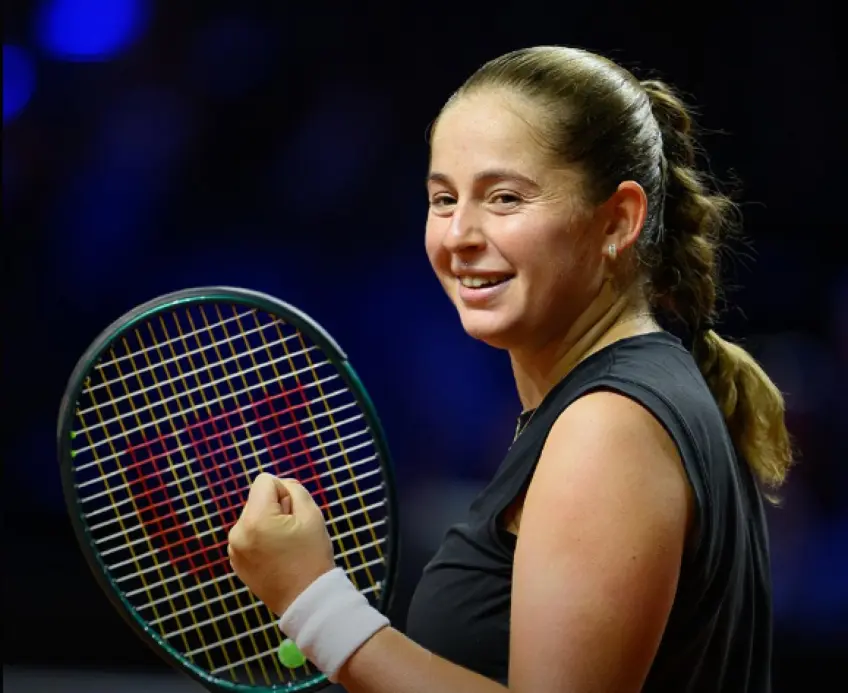
In a dazzling display of power and precision, Jelena Ostapenko stormed to victory at the 2025 Porsche Tennis Grand Prix in Stuttgart, capturing her ninth WTA singles title and etching her name into the annals of tennis history. The 27-year-old Latvian, ranked world No. 24, delivered a commanding 6-4, 6-1 performance against world No. 1 Aryna Sabalenka in the final, showcasing her fearless brand of tennis on the indoor clay of the Porsche Arena. Ostapenko’s triumph was not just a personal milestone but a historic achievement, as she became the first WTA player in 13 years to defeat both the world No. 1 and No. 2—Sabalenka and Iga Swiatek, respectively—en route to a clay-court title, a feat last accomplished by Serena Williams at the 2012 Madrid Open. Her victory also marked her as one of the few active players to win titles across five distinct surfaces, joining an elite group that includes Petra Kvitova and Karolina Pliskova.
Ostapenko’s path to glory in Stuttgart was a masterclass in aggressive baseline play. Entering the tournament with a modest 7-9 record for 2025, she defied expectations by toppling a formidable field. Her campaign began with a statement win over US Open semi-finalist Emma Navarro, followed by a stunning quarter-final upset against Swiatek, the world No. 2 and two-time Stuttgart champion. Ostapenko’s 6-3, 6-4 victory extended her perfect 6-0 head-to-head record against Swiatek, a dominance unmatched by any other active player. “I felt very confident from the very first day,” Ostapenko revealed after the final. “I had this strange, but also good feeling, that something special could happen here.” Her semi-final win over Ekaterina Alexandrova, who had ousted top players like Jessica Pegula, set the stage for her clash with Sabalenka.
The final was a pulsating battle of linear ball-strikers, with Ostapenko’s relentless aggression overwhelming Sabalenka. She unleashed 21 winners and broke Sabalenka’s serve six times, dominating the second set with a run of 14 points in 17. Her first-serve efficiency was remarkable, winning 81% of those points, while Sabalenka struggled, securing just 53% on her own. “You were just a better player than me today,” Sabalenka graciously conceded during the trophy ceremony, adding with a laugh, “I’m glad I can afford this car. After this final, I’m gonna order one.” For Ostapenko, the victory was her first over Sabalenka in four meetings and her second clay-court title since her 2017 Roland Garros triumph. The prize? A sleek Porsche Macan Turbo, which she drove into the arena, steering with one hand while waving to 4,200 cheering fans. “I love playing here,” she beamed. “It really was a perfect week for me.”
Ostapenko’s Stuttgart triumph reverberated beyond the court, drawing parallels to Serena Williams’ 2012 Madrid feat, where she also defeated the top two ranked players. This rare achievement underscored Ostapenko’s ability to rise to the occasion against the sport’s elite. Her versatility across surfaces—outdoor hard, indoor hard, grass, outdoor clay, and now indoor clay—places her in exclusive company, a testament to her adaptability and raw talent. The only active player to reach finals on seven different surfaces, including the now-defunct carpet, Ostapenko’s Stuttgart success highlighted her as a singular force in women’s tennis.
The tournament, a WTA 500 event with a prize pool exceeding $1 million, saw Ostapenko earn $162,181 and 500 ranking points, propelling her six spots to world No. 18 with 2,345 points. This surge, with only one point to defend from her 2024 first-round exit, signals a potential return to the top 10, where she once peaked at No. 5. Her confidence was palpable: “I think I’m improving day by day and I’m playing better and better,” she told the press, reflecting on a premonition of victory she felt upon arriving in Stuttgart.
Stuttgart’s passionate crowd and electric atmosphere amplified Ostapenko’s performance. The event, a cornerstone of Porsche’s commitment to women’s tennis since 1978, drew 33,000 spectators, with the final day featuring a cultural highlight—a Stuttgart Ballet performance. For Ostapenko, the victory was a crowning moment in a career defined by bold, attacking tennis. As she heads to the Madrid Open, where the main draw begins April 22, 2025, the tennis world buzzes with anticipation. Can Ostapenko sustain her momentum and challenge for more titles? Her Stuttgart heroics suggest she’s ready to drive her career to new heights, both on the court and behind the wheel of her new Porsche.
Leave a Reply